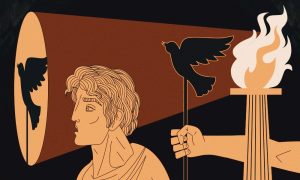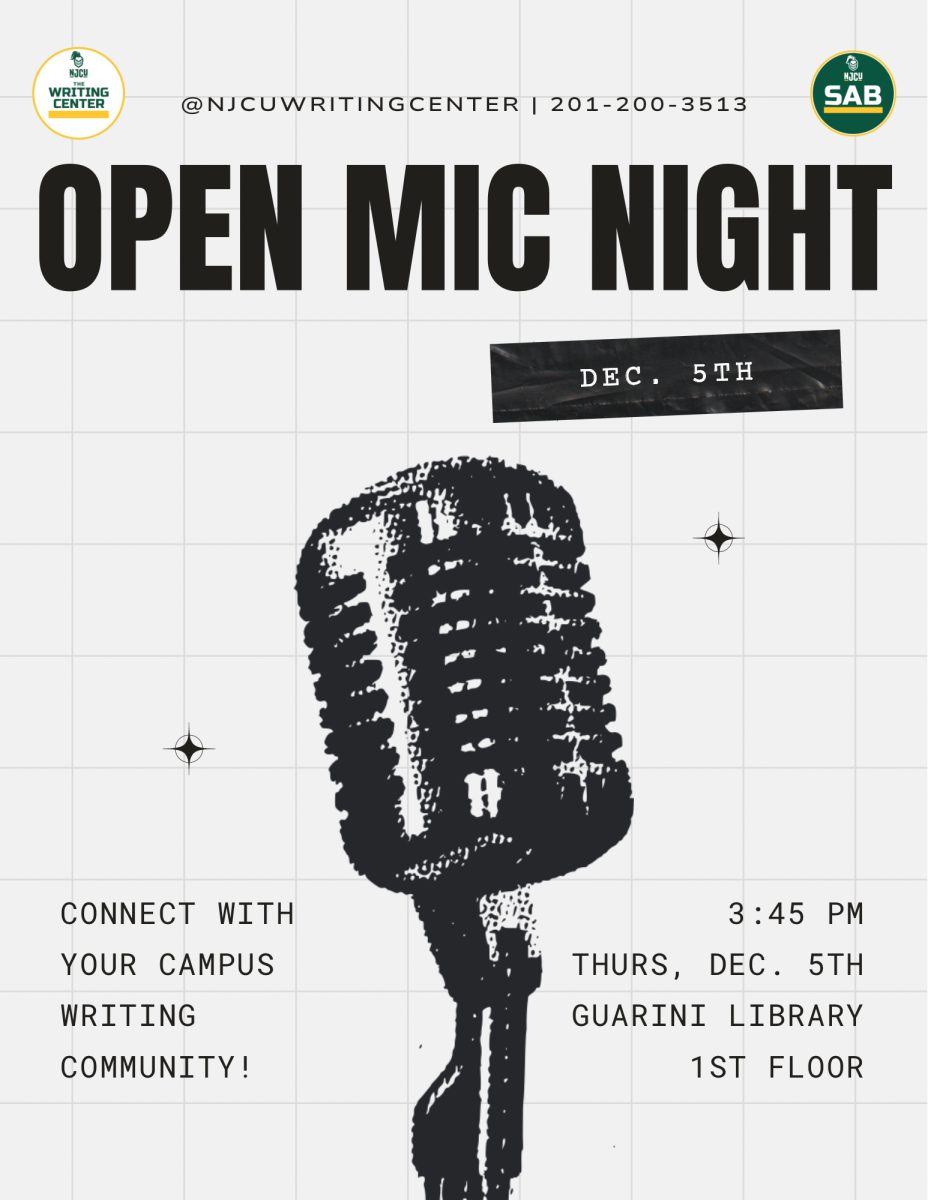Killing Animals, Saving Lives: Soldiers and Animals during Wartime
May 6, 2015
There is a street in the city of San Bernardino, CA. that is cascaded endlessly with trees
as far as the eye can see. The trees interlace as if holding hands. During the spring they blossom
and blow casually in the wind and during the fall they cast an array of colors against a blue
background. There is a house that is beyond these trees, behind bamboo fencing and a garden of
oriental poppies, purple geraniums, and Hosta flowers that look like dancing stars. This house is
wrapped strategically in emerald green paneling and has so much personality that a stranger
would love for a tour inside.
The owners are Alicia and Greg Tobin. They are the parents of three children, two girls
and a boy and also have opened their home to a number of animals. A medium sized body of
cream colored fur is sunbathing near a window on an early August morning. Bullet, is a German
Sheppard; he had previously been a military working dog and during his last tour he lost his left
hind leg to a bullet. His snout is cold and wet as he nuzzles his companion, Lucy, a tuxedo cat
with a scar that completely covers her right eye. Lucy was originally a stray cat left behind in Al
Basrah. Despite the fact that her eye was gouged out and she was left to die, the Tobin’s still
adopted her.
On lazy days they sit on the end of their owners’ bed, full of eagerness to please the
family that took them in. The German shepherd’s favorite past time is playing fetch in the
backyard and the tuxedo’s is shaking hands in exchange for a treat. The cat sleeps on average
for about eleven hours a day; she enjoys sunbathing and chasing birds.
What could happen to service animals who are adopted after they have worked through
their term? Abandoned military service animals who are adopted can return to normal life after a
short time of healing. Making for a transition to home life, the animals become more than pets,
they become great companions who have served for a cause.
Dogs are said to be a man’s best friend and more often than not, the same goes for cats.
Pet owners not only see them as animals, but they are seen as companions who deserve to be
cared for and cherished. But what happens to these glorious animals that find themselves in the
confines of human cruelty or war? What happens to the strays? The service animals? Or to their
owners when war comes between them?
Animals have become a huge part of people’s lives and many individuals have gone
through ups and downs to reach for the protection and preservation of these animals. On a clear
morning in early March of 2015, National Public Radio published an article about the release of
all elephants as part of any circus act. Fighting for the lives of beings that cannot speak in human
tongue takes a lot of time and effort.
However, not everyone feels this way. According to American film director Oliver Stone
and PETA, on average, there are over 10,000 animals that are killed each to the hands of military
training and even terrorist baiting. While many of these animals are in fact trained to help men in
the military, there have also been high concentrations of animals that are strays and ultimately
become casualties of war as a result.
According to the College Campaign Assistant of People for the Ethical Treatment of
Animals’ (PETA) Alanna Wagy, animal welfare is crucial.
“We believe that animals deserve consideration of what is in their own best interests.
The United States military forcing animals to risk their lives as bomb-sniffers for a war that is a
human endeavor is contrary to this consideration,” Wagy said.
Despite PETA being for the ethical treatment of animals, there are not-for-profit
organizations that don’t always care about the complete welfare of animals.
Erica Hughes is the executive director of the State Humane Society of California, during
a phone interview she explained the reality of HSUS and SPCA groups.
“All the local humane societies, SPCA (Society for the Prevention of Cruelty to Animals)
and HSUSs (The Humane Society of the United States) are not connected—they are all separate
entities,” Hughes began.
“The ASPCA (American Society for the Prevention of Cruelty of Animals) has a shelter
in New York. They are involved in lobbying but also provide grants to certain animal
associations who have to apply to be accepted,” she continued. “The HSUS is not a shelter, but
they work with farm animals and are [involved] in lobbying. [The HSUS] does not give hands on
animal care.”
While the HSUS of California does not have an opinion on how the ASPCA is involved
in lobbying, they do have a strong judgement on how they advertise and market themselves.
“The commercials, news and web letters lead to misconceptions that they are a part of the
main chapter of the SPCA and the HSUS. The ASPCA refuses to clear the air about the
misconception (the ASPCA not being a main chapter of the SPCA or HSUS),” Hughes finished.
It can be found that more than half the money that is donated to the ASPCA is actually
built into their marketing plan for new advertisement each year.
In recent years, not-for-profit organizations have begun to build up such a reputation for
the rescue of animals that they are usually the first that many people turn to. One of those
organizations is the European based Nowzad Dogs. Nowzad Dogs is a nonprofit organization
which aims to rescue stray and abandoned dogs from Afghanistan. Nowzad has been so
successful in its endeavor that it has become an official animal shelter in Afghanistan.
Unfortunately, the organization can only rescue so many animals at a time due to the cost of
sending a rescue team, vaccinations, and airline travel costs.
Founder, Chairman of Nowzad Dogs, and 2014 CNN Hero, Pen Farthing explained
during a phone interview, how Nowzad Dogs was born. “It started out with the original dog,
Nowzad. He was in a dog fight and I couldn’t just leave him there to fight. It made me realize
with just a little bit of effort I could go and get them. Instead of sitting in a pub, I could be out
making a difference. It took a lot of people to get it off the ground but I would just be sitting with
a smile on my face afterwards (animal rescues).”
Farthing explained the dog fighting is an obvious sign of owners who are willfully
abusing their animals. However, illuminated some of the reasons, why he believes people in
Afghanistan abuse animals.
“Generally, Afghans don’t just got out and tour the dogs and cats because they want to,
its ignorance. I have seen people throwing rocks at dogs that have rabies, it is because they
afraid. They (also) don’t have vaccines to cure the dogs, and they won’t go out to and talk to
them for fun. With all the pack of strays, people either run the other way or walk away from
them,” Farthing said.
While there aren’t very many people who feel the same as Farthing, the understanding
that animals need to be loved as well is a growing concept.
“I don’t know if I made an impact on the world, but I did on a few people. A few
generations from now will want to help their local shelters. It will be a bug that will (spread) in
America or around the world. On the grand scale, it’s still working,” Farthing explained.
And while the bug may be a small one, it is definitely growing within a number of animal
activists.
National Security Affairs and Assistant Professor, Negeen Pegahi, Ph.D., of the U.S.
Naval War College of Newport, Rhode Island expressed her experience with Nowzad. During
Pegahi’s last tour in Afghanistan she and her husband had encountered a stray kitten which they
named Panzer.
“I first met Panzer when I saw a couple Army folks with whom I worked sitting in the
sun petting her one day. She was so small, about four months old then, that I initially didn’t even
notice her and thought the two soldiers were just hanging out. I joined in and played with her for
a while and then would see her every few days and do the same,” Pegahi said during an e-mail
interview. “I slowly figured out where her usual hang-out spots were on the camp (it wasn’t a
very big place, about half a mile long by half a mile wide) and would go try to find her on my
breaks. She was often in the gutters — concrete channels that ran around the camp to carry rain,
snowmelt, etc. — and would pop out when she heard you calling. She’s run over to you like a
dog; it was great. Sometimes I wouldn’t see her for a few days and we heard she went over to
the German camp next to ours where they didn’t have all the rules against feeding, playing with,
etc. stray animals that we did. We assume that’s where the name “Panzer” came from, one of the
Germans (it’s an old German tank).”
Pegahi’s tale with Panzer was far from over. After clearing with her officemates, she
began bringing the kitten into her office from time to time and would leave food out for Panzer
every day.
“It was hard to know, though, whether she was eating it or one of the other cats on the
camp. We worried about her getting enough and about winter coming. (We arrived at the
beginning of the summer, figure she was born in June or July, met her in the fall, and got her off
the camp and into Nowzad’s clinic in December, then to the US in early February.) Seeing and
playing with her were often the highlights of my weeks. All we did was work and the
environment was pretty depressing so she was a real ray of sunshine for us. Lots of people on
the camp had really fallen in love with her and she had at least three names I heard — Panzer,
Cleo, and Miss Penny,” Pegahi said.
Pegahi and her company were stationed on a small, primarily U.S. camp on the northern
outskirts of the Afghan capital, Kabul.
“It was a collection of low, generally cream and/or brown buildings and almost all the
outdoor space was covered in small rocks and a lot of dust. There was very little grass or other
greenery. We had mountains running along one side of the camp and more in the distance, so the
views out were very nice but we felt (and we were) pretty cut off from the actual country and
people of Afghanistan. I didn’t get to spend that much time with Panzer, usually just ten minutes
or so every two or three days when I was taking a break outside,” she described.
“We worked from 7:00 in the morning to anywhere from 11:00 at night to 2:00 in the
morning. Playing with the animals was one of the only ways to have a break, though technically
we weren’t allowed to be doing that,” she said. “I brought Panzer into the office a few times and,
after working hard on convincing my husband for a week or so (since it was such a violation of
the rules), into our room overnight once. I tried to give her a bath in the sink because she was
filthy but stopped before even getting her wet because she seemed pretty freaked out. So we just
hung out on the bed and she slept most of the night with us before starting to cry early in the
morning. We let her out before anyone woke up to hear her / figure out what we were doing.
She ran off into the snow and looked back at us once.”
Pegahi explained that with Panzer’s understanding of the world and constantly being
skittish to the world around her, she had trouble adjusting. Being that Panzer often had to fight
for her safety, it had become a habit that was built in to the animal’s consciousness.
“I think at that point — when she stayed in our room with us — if not before I was set on
figuring out how to get her back with us. It was really sweet; she was initially very reluctant to
fully just relax and sleep. She was fighting letting her head drop on the bed when she was laying
down but slowly, inch-by-inch, it did until she was just passed out. We figured she always had
to be at least somewhat alert on the camp given all the natural predators (the tomcats, the
working dogs, the Afghan guards who didn’t like animals, etc.) It was great to see her able to
completely let go and get some good rest. She stuck up the whole room she smelled so bad but it
was great,” she finished.
When Pegahi had finished her tour she was devastated with having to leave Panzer
behind on her lonesome and so she found Nowzad. While she did not work closely with Farthing
she did in fact work alongside with a number of members.
“Nowzad was wonderful. They really made it all happen; I literally couldn’t have gotten
her home without them. They gave her all the shots and things she needed to be cleared for
international travel; they handled all the paperwork for that; they booked a company in Dubai
that would transfer her from the first flight (Kabul to Dubai) to the second (Dubai all the way to
DC); and organized how my mother would pick her up at the airport in DC,” she explained
Panzer’s voyage to her new home. “This didn’t come cheap — it all cost a little over $3,000, but
almost all of that went to the cost of the shots and the operation (they spayed her), the flights, the
company in Dubai, the carrier she travelled in, etc.”
According to Pegahi, “Nowzad typically has a $300 ‘convenience fee,’” for fully
vaccinating and spading the animal.
“They waived most of it in our case which was really kind and unexpected of them. They
really are just interested in helping animals get healthy and get good homes. I visited just twice,
the first time to drop her off for her shots and operation, after which she’d have to stay at least 30
days before flying out, then a second time shortly before she flew out so I could say goodbye,”
she said.
During Pegahi’s last few days of visiting Panzer before her vaccination and expedition on
reaching what would now be home, she got to meet the members who were as passionate about
saving animals as she was.
“There was a sweet old Afghan man who watched the gate and the grounds; a middle-
aged Afghan man named Dr. Hadi who was their head vet and who handled her operation; a
British woman (Louise) who handled the humans, the Afghan airlines, and the company in
Dubai; and an Afghan woman who was I think training to be a vet. There are of course lots of
others involved but those were the people I met on my two short visits. They had a bunch of
sweet dogs running around on the grounds, all of whom wanted you to play with them and were
adorable, and then an indoor two-room cat place where those who were healthy (had all their
shots, etc.) were waiting to go to their forever homes,” she said.
And Panzer’s trip began where it started, at home with Pegahi and her husband.
“Panzer flew to DC in early February and stayed with my mother, who was already
keeping my dog (an Alaskan malamute named Nikita). My husband and I got back in late May
and then I got my house in Newport, RI in late July and Panzer and I moved up here. While she
was in DC and Mike and I were still in Afghanistan, my mother would send a steady stream of
photos and stories and it sounded like Panzer did great adjusting to life as a pet in an American
house after growing up as a stray on Afghan streets. When we settled into our new house, she
quickly found favorite spots — e.g., laying on the ottoman in the sun in front of the big picture
window in the living room — and just generally adapted very smoothly. Mike and I always joke
about how much we have to learn from her. She’s been through so much but is just the coolest
customer. It’s a real inspiration,” she beamed.
Over 30 Marines and Navy corpsmen stepped foot onto a wickedly war-torn wasteland
outside of Ramadi, Iraq. Dry heat burrowed its way through their uniforms, groping at their
tightening vocal cords as they surveyed their surroundings: speechless. Partially demolished
buildings that had been shot at or bombed cascaded the landscape.
The troupe was stationed in an abandoned warehouse near a creek that reeked of human
feces and rotting meat. The team had been notified that the creek was a not only a dumping site
for the civilians of the neighboring city, but a contaminated drinking source. Stray animals would
often frequent the bog and posed a threat to the newly stationed soldiers.
In the desert heat of Ramadi, Corporal Zeus (his name has been changed to protect his
privacy) sat staring out the window of the warehouse that he was stationed at. Vultures croak in
the distance as they flew in circles overhead of a cat’s carcass that he had just recently shot.
“I found a kitten; someone in my unit had glued its eyes shut, poured hand sanitizer on it
and set it on fire. Whoever had done it had left it out to die. It was extremely hot outside and the
flies had already begun to gather. I felt bad and thought to myself—‘let me put it out of its
misery,’ and I shot it. That shit completely fucked me up,” said Zeus.
Trekking through war-ravaged lands that left behind the cadavers of hundreds of animals
poised itself as a quandary to Zeus. He recycled through the thoughts in his head, almost
regretting them as he explained his story without a filter. Change had come when he returned to
America and became an animal activist and rescuer.
Zeus has spent much of his downtime fostering animals across the east coast. His last
foster and rescue experience proved to be truly beneficial for his health.
“It was real good. Suffering with PTSD (post-traumatic stress disorder) and not being in
the military anymore, I felt useless. So being able to help animals and save them, I felt worth
something again,” Zeus confessed. “Especially to know they will be okay.”
The animal that Zeus met for his very last rescue proved to be more than worth his time
and patience.
“Max, he was a great dog, but he wasn’t supposed to be around other animals,” Zeus said.
Max was known to get scared very easily and his body language would set off other
animals.
“He was kept in his whole life. A rescue (group) took him in, paid for boarding and
training, I helped with the payments. And no one would foster [him] since he wasn’t good with
animals. Eventually the rescue found a foster in Georgia and he is there now [and] happy,” he
exclaimed.
While Zeus rescues animals on more of a personal level there are those who rescue
animals on more of a national level. Animals are true companions and they deserve every bit of
compassion that they can be given. There are many people who do not initially aim on abusing
animals but end up doing it any way.
“Learning more and more how to do it (rescue animals) only when I can. It’s not easy
because you can’t trust anyone. You really have to use a microscope on people to make sure
they’re a good fit for an animal,” Zeus added. “And you can’t save all of them, which hurts the
most.”
Farthing shares the same views as Zeus in terms of attempting to rescue the animals of
the world, but agrees that all rescues are not possible.
“If you don’t do something how do you know it wouldn’t work? People who don’t know
about those who live in Afghanistan [assume] all Afghans are Muslim or [they] hate dogs,”
Farthing explained. “At our animal clinic there are four afghan vets, we see Afghans on a daily
basis with sick pets. We get to see different people and cultures who all have a common
goal—animal welfare.”
With people and veterans alike, animal welfare is as important as human welfare. Despite
the difficulties that animal activists and nonprofit organizations may face, they work towards
making sure that all animals are protected and treated fairly.
The welfare of all living creatures is a delicately interwoven affair, one that everyone can
be a part of. While it does take time and dedication, the betterment of this world is simply one
step away from the last.
Capstone
Professor Broderick











